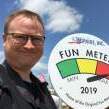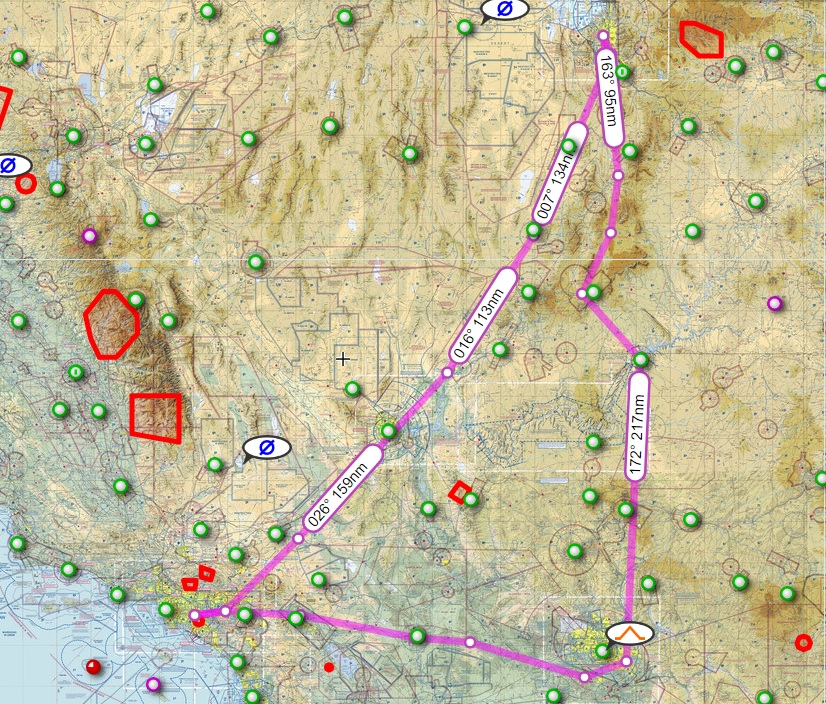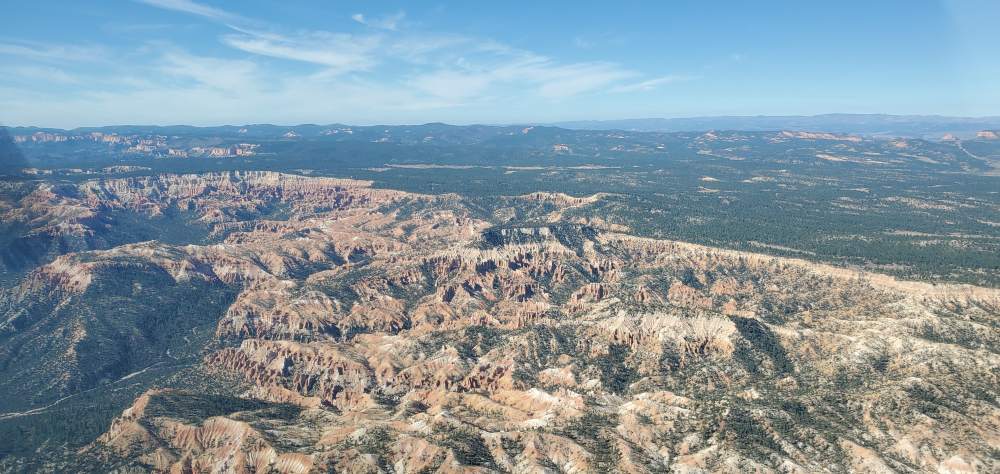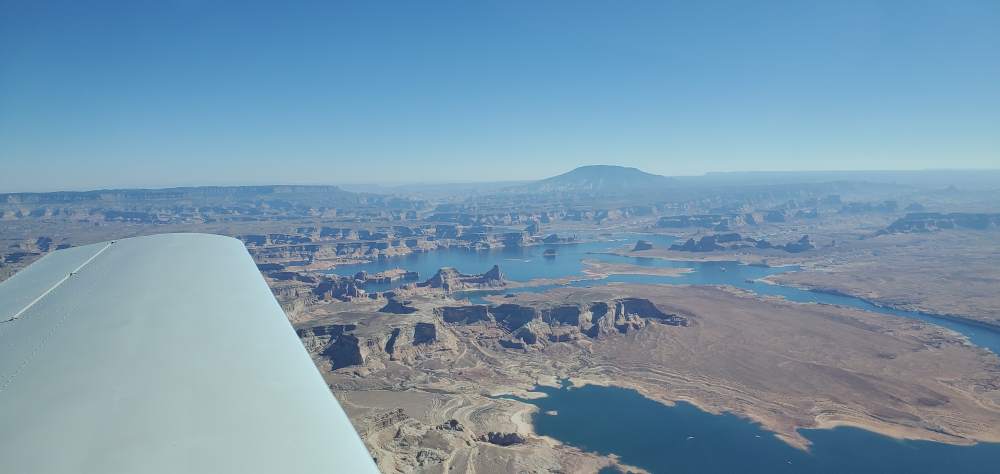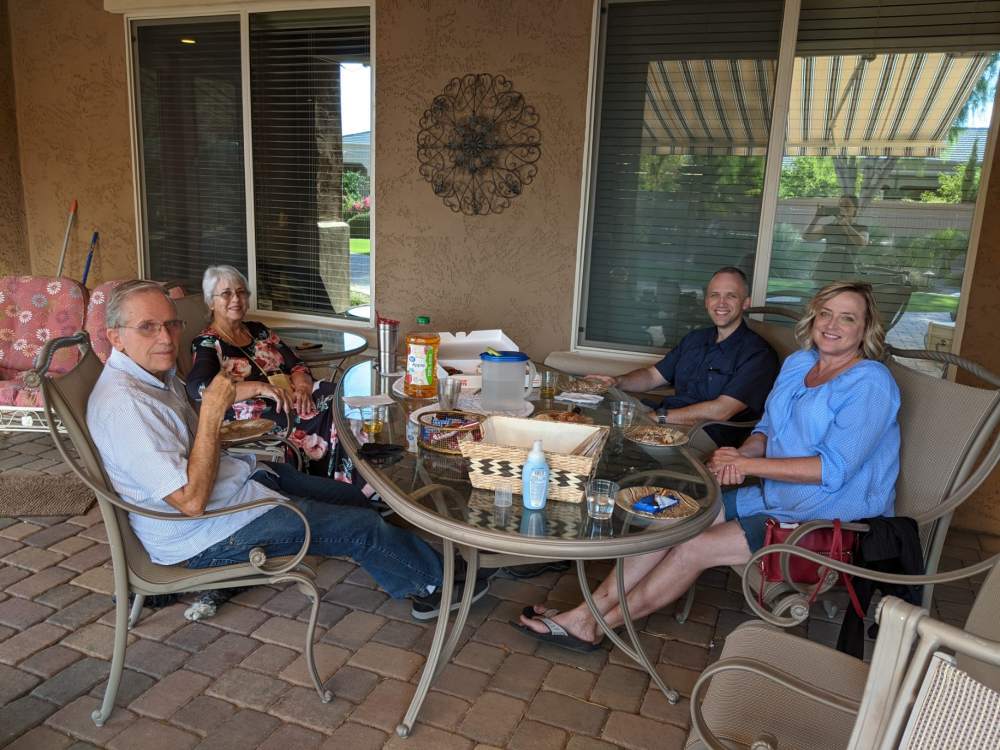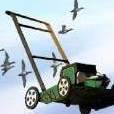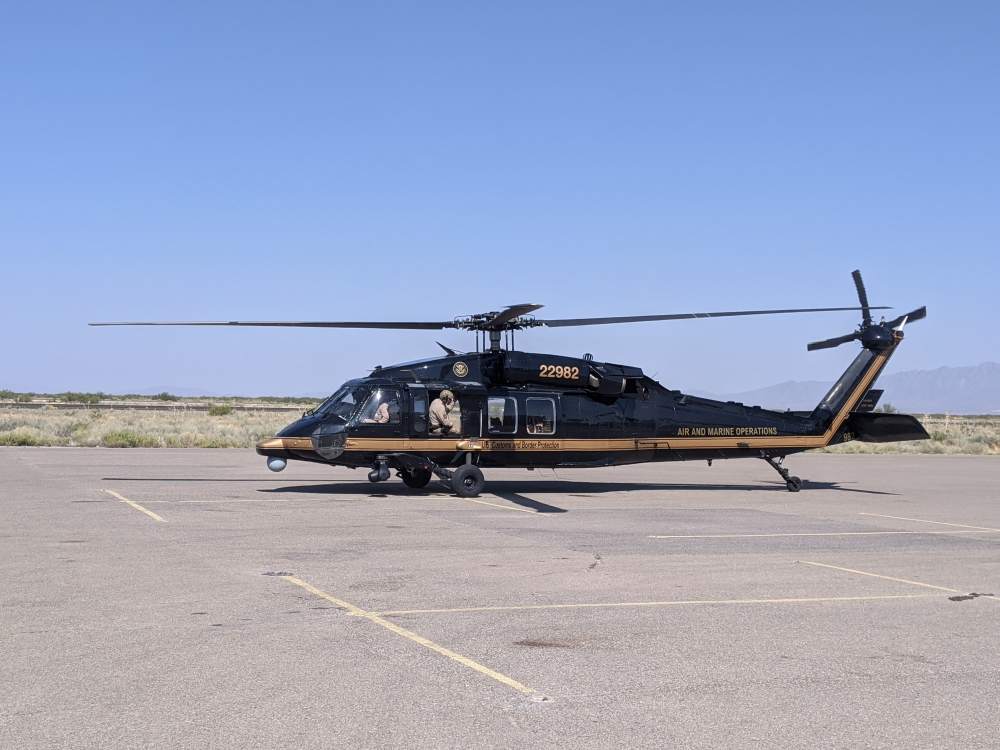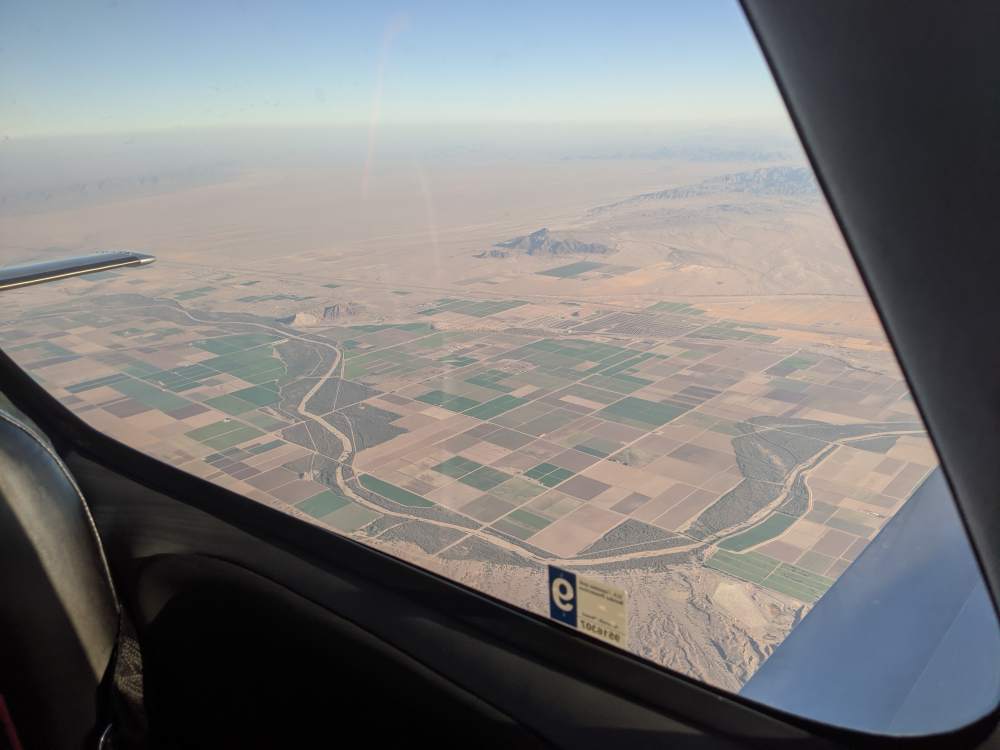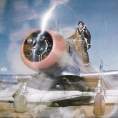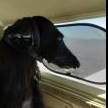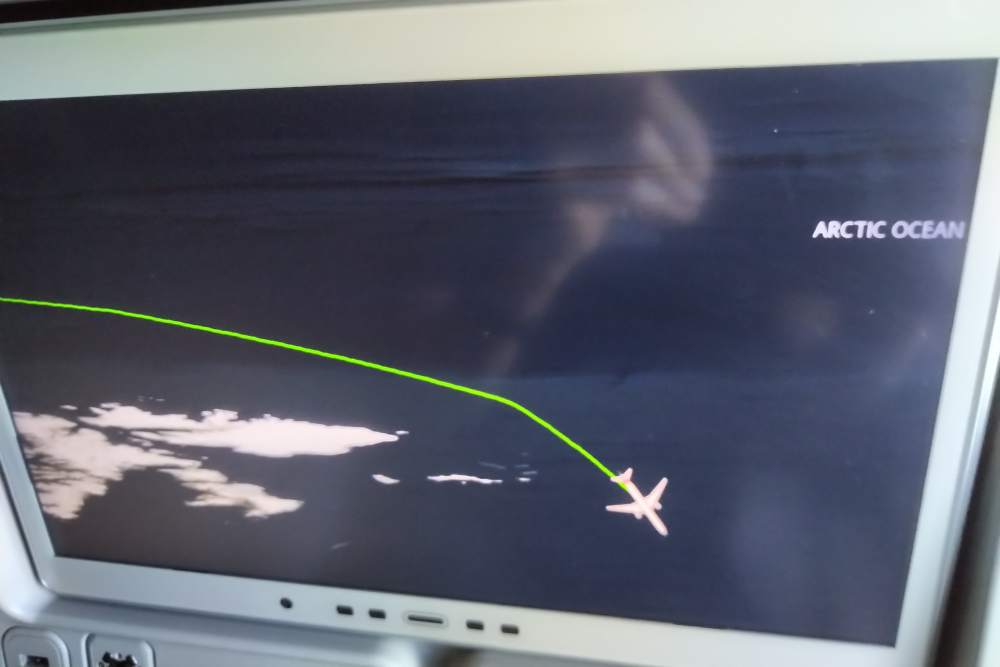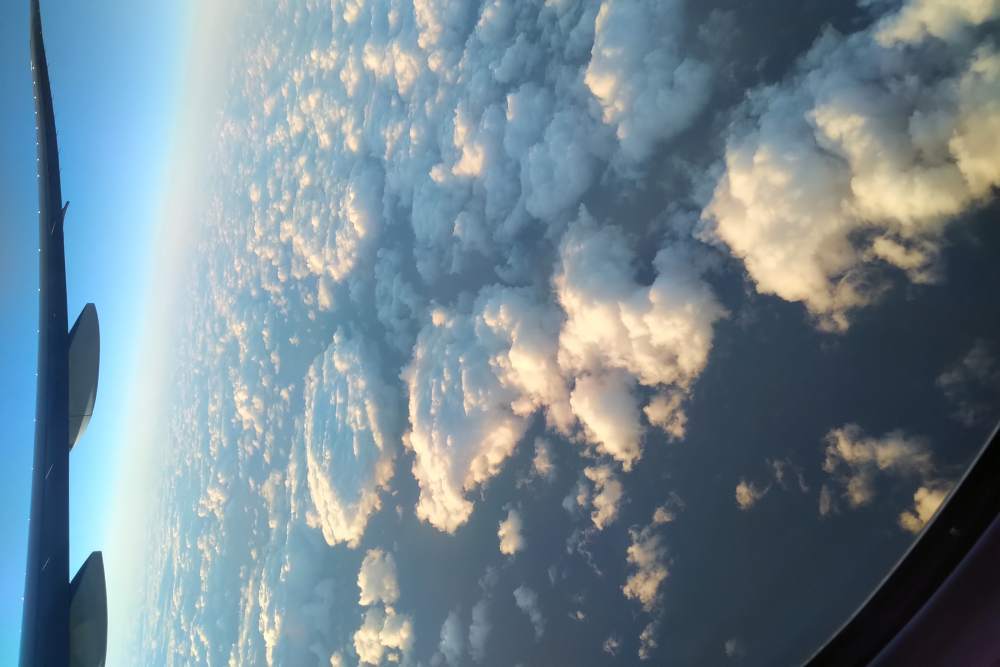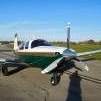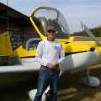Leaderboard
Popular Content
Showing content with the highest reputation on 10/13/2020 in all areas
-
Hey friends, I just flew a four-day trip shuttling folks between Newark and the Dominican Republic. On the last day, they let us fly over dry ground... to some very dry ground. Phoenix, if we're going to be specific. I was supposed to be deadheading back to NYC but it was the end of the trip, so I chose my own adventure and stuck out my thumb for a direct ride home on a Delta jump seat. Another pilot showed up, also looking to hitchhike and we were chatting at the gate when I made mention of traveling in the Mooney. The guys eyes lit up. "What model?" An old '65 C model, I said, and started rattling off the basics but I didn't have to. This fella has an E model. We chatted at the gate for a while - and for most of the flight back, as we compared ownership notes. He said he signed up for mooneyspace but had never bothered much with it. I think he'll probably make an appearance soon after it became apparent how much good information is here. Without this support network, he and his mechanic were apparently unaware of the CiES fuel senders - they'd hooked up a JPI EDM-900 to the old senders and were getting the same bad fuel management data as before. Other topics that came up were instrument shops that can overhaul stuff for a lot cheaper than running out to replace a busted gyro, how to repair interior plastic pieces, PC system repairs, and Sensorcon CO detectors. Then I realized before I dug into the stacks here, I didn't know squat about these things, and I've been kneed deep in aviation since before I could drive. I'm grateful for y'all, and for the resource we have here. We now resume the normal banter.11 points
-
We flew Saturday from Tuscaloosa to near Grand Rapids, Michigan, to visit our son and family. On the way up, we flew around the rainy area associated with decaying tropical storm Delta. Returned this morning. The instrument rating made this flight possible, and our C is running great. Covered about 1300 nm and shot three instrument approaches, two to minimums. This photo was taken this morning as the sun rose over southern Michigan. Gorgeous day! Almost nobody flying between 6000-10000 ft along our route.7 points
-
Courtesy of Wicks Aircraft: CAT – 1 ply neoprene impregnated fiberglass with very closely spaced spiral copper coated high carbon steel wire inside exterior wrapped fiberglass cord. From -85 degrees F to over 350 degrees F. Aircraft type. Maximum length 10 feet. (BLACK).SCAT – 1 ply same as CAT except with silicone rubber impregnation. From -80 degrees F to over 450 degrees F. Aircraft and industrial type. Maximum length 11 feet. (RED).CEET – 2 ply neoprene impregnated fiberglass same as CAT except wire between plies. From -85 degrees F to over 350 degrees F. Aircraft type. Maximum length 10 feet. (BLACK).SCEET – 2 ply same as SCAT except wire between plies. From -80 degrees F to over 500 degrees F. Aircraft and industrial type. Maximum length 11 feet. (RED). Attached Aeroduct catalog has everything you want to know about ducting. In the engine compartment, I use SCEET. SCAT is more flexible, but the wire always seems to eventually work it's way through the thin wall no mater how you terminate it. In the cabin, CAT works well and is very flexible. Guy @GEE-BEE can make you ducts in whatever length and diameter you want with professionally finished ends. They will last to at least TBO. Skip AERODUCT-Aviation-Ducting-and-Hose-Products-Catalog.pdf4 points
-
This is why we have the Mooney. Worked half a day on Friday and then flew to Salt Lake to surprise my sister for her 50th birthday. Then we got up Saturday morning, picked some raspberries for my dad from her garden and flew from Salt Lake to Phoenix to see my parents whom I haven't seen since Thanksgiving. On the way we flew over the tiny mountain town where my dad was born and the farm that was in the family for 100 years and took pictures and video for him. We also flew over Bryce Canyon and Lake Powell. We visited my parents and then had dinner at my sisters and stayed at one of my other sisters for the night. (Normally we stay at my parents but don't want to be in their home that much right now.) We had breakfast on the back patio with my parents this morning before flying home mid-day. A little over 1300 nm flown and memories to last a lifetime. Full post and more pictures coming soon.4 points
-
Here is the landing when we arrived in Rio, as edited by my son Curtis...he is much more technological than I am... (I can work the G1000 at least!)3 points
-
3 points
-
In IAs job is to insure the airplane conforms to the type certificate. The TC can be modified by STC which can be a one time STC (field approval) If the aircraft conforms to the TC (amended) and the IA won't sign it off, find another IA. BTW, there is no requirement for an IA to return an aircraft to service, they only inspect it. If there are discrepancies, he just needs to list them and his responsibility is over. Any A&P can fix the discrepancies and return the aircraft to service. I realize in most cases the inspector and mechanic are the same person and having another mechanic work on a plane that may not be easily movable is a problem. Getting a ferry permit to fly a plane with discrepancies and/or out of annual to another maintenance facility is specifically allowed.3 points
-
John is right, because he explicitly caveated with following it to MDA - not below. I think the video example may be confusing the real issue. The real issue is following an advisory glidepath below MDA - NOT TO MDA. We are afforded obstacle protection following it to MDA - just not below MDA. The video example cited the problem when a pilot descends below the MDA when obstacles are present on the visual portion of the approach. Advisory glide path, +V, comes from the Continuous Descent from Final Approach (CDFA) principal that defines stabilized approach - the stabilized approach and CDFA are detailed in AC 120-08. Before we can have +V, the TERPSters that design the approach chart, have to publish a glide path angle from the FAF to runway. The FAA for years has been encouraging pilots to make one continuous descent from the FAF rather than the old "Dive and Drive" between step down fixes. By publishing a glide path angle that is able to meet all the step down fix requirements between the FAF and threshold, pilots can use that charted angle to make a continuous descent. We can do that on every approach when we trying to follow a 3 degree glide path, for example, by maintaining a stable descent rate that matches the required feet per minute to a 3 degree descent rate. Then Garmin came along and implemented the charted Glide path angle to make it easy for GA pilots to follow CDFA - but only when charted (as Mark showed in an example above). Of course, no manufacturer is making these up and they aren't necessarily always 3 degrees (they may range from 2.75º–3.77º) . Nor is there any danger in following these above MDA; only when a the pilot follows them below MDA/MDH as if it was a real glideslope (ILS or LPV). Robert provides another good example above at Columbia of an approach where it would be dangerous to follow +V below MDA. One of the government charts deficiencies IMO is they don't always show the published glide path angle such as on the Columbia O22 RNAV 35. The government chart shows no GPA on that approach. So therefore you won't know till you load an approach if it will have +V, or worse not until you fly it on a GNS navigator and see the GS come alive. But if you look at the corresponding Jepp chart you'll see the GPA is 3.04 degrees and thus you'll know as soon as you see the chart that the approach will have +V. Plus the savvy pilot will also understand the note on the plan view that says "Visual Segment - Obstacles 34:1 is not clear" as well as symbology, or lack thereof, in the profile view that tells us about potential obstacles on the visual portion. Unfortunately with respect to the visual portion below minimums, when it comes to government charts, its more about a lack of symbology that tells us when we need to be extra careful. For example if we see a VDP (visual descent point) we know we should be good descending from the VDP to the threshold. Well almost, if the VDP also includes a grey stipple, then yes we have similar protection afforded just like a VASI or PAPI in that the 34:1 slope from the VDP is clear of obstacles. A 34:1 slope, or 178 FPNM, is much shallower than 3 degree and thus just like a VASI we could similarly drop a bit below the GPA, like seeing 3 reds and 1 white, and still be okay. But without the grey stipple on the VDP, then we only have a 20:1 slope, or 304 FPNM, which is right at 3 degrees, so unlike the prior VASI comparison, we have no safe margin below the 3 degree slope and need to be more careful. But in the absence of a VDP its telling us that the visual path below MDA, following a charted GPA is not clear of obstacles! This isn't always clearly charted. Remember also too even VASI and PAPI's both have limits for obstacle protection, with lateral limits of +/- 10 degrees and distance limits of 4nm for VASI and 3 nm for PAPI.3 points
-
Maybe that’s true and I definitely hope it works out for you, but keep an eye on that starter solenoid...3 points
-
This summer I met Bryan from Just Plane Silly and we were talking about his irreverent approach to aviation videos. He asked it he could shoot some video and pictures of my plane for a video idea he was hatching. Well here it is, the Just Plane Silly vision of what 1970's TV ads could have been for GA aircraft. Just enjoy the video and don't take the snarky comments seriously.2 points
-
Buying a Mooney was the best decision we have made and we have absolutely loved flying our F model for the last year+ with all kinds of missions. Hope you guys enjoy the short video I made about our adventures this past year!2 points
-
I prefer traditional wrist watches to Smart Watches”. Anyone else wear old school time pieces instead of computers on their wrist? Wrist watches are works of art. I feel naked without them. I do have a Garmin Approach for gps yardage on golf course, but that is as techy as I get on wrist calculators.2 points
-
Lots of people use this stuff as their main preferred oil. There is a fair amount of opinion that multi-viscosity is less preferable. I've recently switched to running this stuff year-round, but I live in the southwest where it doesn't really get very cold.2 points
-
2 points
-
Yeah! That's it! I love when he says, "Timex is scientifically sealed." I think I will go out to the hangar and put my mickey seiko on the prop of my airplane and fly around for a while and see if it still works. Those ads were just the best. I love those 50's tv voices too.2 points
-
There's my titanium eco-drive (solar powered electric never wind never change battery) daily beater - Ti body and Ti band for lightweight durable. Always runs. Water proof (vs resistant) and just takes a licken' and keeps on tickin' (better than timex even) - and it does one thing and does it well. It tells time. And there's my special occasions watch, or I am just in that mood. My Seiko-Mickey with a rubber band.2 points
-
Where in the world does this come from? Putting a different prop on, installing a JPI EDM 900 or a Garmin G5 via STC is a Major Alteration. That's how you "alter" a certificated aircraft using approved data and submitting the proper 337 paperwork. If it isn't via an STC, you can do it with an FAA field approval or other FAA Approved data. Experimental is different category of aircraft and has nothing to do with proper major alterations.2 points
-
Ice is prettier from FL330 than from 50 msl. In the former, it's something to look at, in the latter it's something to avoid, because the 90% of it that's underwater can put you underwater, too . . . . Boat and all . . . .2 points
-
Let @DanM20C know about the CO detection! Call that a win! Best regards, -a-2 points
-
Power-off, and you’ve got the energy you’ve got. A little power on and behind the power curve, and you can take energy out of the mix in the flare. Simultaneously rolling in nose up trim and rolling out power works well for me. Learn what it looks and feels like on a big runway, obviously. -dan2 points
-
I do a fair amount of Mooney transition training and am in Tucson. I've transitioned I think 4-5 people into Mooneys this year including signing off a guy yesterday.2 points
-
Or stop in San Antonio on the way back to California and have Hector at Aero Comfort look at the airplane and ship you whatever you need for you to install. https://aerocomfort.com/mooney/2 points
-
2 points
-
YAY..... there was a report that said there is little difference in aviation oils, Might as well save money.1 point
-
http://www.google.com <search string> site:mooneyspace.com is your friend!1 point
-
When I was a teenager whenever we saw anything absurd it was a basis for a Timex commercial: We strapped John Cameron Swayze to the rotor of this Huey helicopter and flew twice around the pattern! John's taken a beating, but you can see the sweep second hand of his Timex is still working perfectly! Edit: Jeebuz, I even remembered that wrong. We always ended with, "John's taken a licking, but his Timex is still ticking!"1 point
-
lose the invicta and you got a pretty decent starter kit there1 point
-
Just an FYI, although I thought your example was a great one regarding the dangers of following +V below the MDA, its not a good example of an approach that terrain prohibits it from using a 3 degree descent angle. But from the government chart you'd never know what it is since they don't show it - one of my pet peeves with government charts but the Jepp version shows its clearly as 3.04 degrees. Additionally, we get more details about the visual segment warning us that the 34:1 is not clear, which is to say the 3 degree angle is not clear - which is why R35 has a 4 degree VASI which I am sure you're well aware of. The Jepp chart also helps us with the stabilized approach by charting what descent rate we need to maintain for our groundspeed - such as 538 Ft/min at 100 kts and to look left for the VASI and to expect to see Runway End Identifier Lights (REIL).1 point
-
The partial panel I was referring to was "needle, ball, airspeed", not just adjusting the scan to a different piece of glass.1 point
-
1 point
-
1 point
-
This reminds me of the scene in Commando where Arnold Schwarzenegger gets in that little car and tears the front seat out first so he can sit on the rear seat and have enough room to drive.1 point
-
My right hand side of the yoke has 2 switches, one for clearing weather on stormscope and the other an instant replay of last audio. Dont use either one of them much.1 point
-
Thanks but this is not the answer to the question that I asked. My question is more about the advantages of the different methods. However.... I bought Don's Landing Video a few years ago and have been using it. I was at 2700lbs landing on a short runway and Don's table shows 80 as approach speed minus 5 for short field and minus 5 for every 300 lb below gross weight. This makes it about 80-13.3=66.7 kts. Add a 50% gust factor which is 3.5 kts and you get 70.2 kts. I was coming in about 70-73 give or take.1 point
-
Seconded. Hector and his team have done several pieces of work for me. They will do more. Exceptional quality and value.1 point
-
1 point
-
Wanted to give a little update: I didn't get back to the airport until today. I put the battery on a charger and ensured it was fully charged. I reinstalled it into the plane and attempted to start it and after turning the ignition all the way and pushing in I only got a click. Tried it about four times with just a click and decided to stop. Had Cutter come out and try to jump it so I can determine if it is a battery issue or beyond the batter. After two attempts the propeller turned and everything started up normally. I taxied around the airport and did a complete run-up and then shut down. I decided to try to restart it after the shutdown and it started first time. I am going to go to the airport tomorrow and hopefully it will start normally so I can take it up and run it through some paces. But it seems maybe the battery was just drained down beyond the ability to start. THANK YOU FOR ALL OF YOUR HELP!!!1 point
-
1 point
-
Send it to Dawley and it will come back looking brand new.1 point
-
You can buy a brand new standby vacuum system for $699, or about $200 used. Will take about 4-6 hours to install it. But in this day and age, the better question is why?1 point
-
1 point
-
1 point
-
Yep. It is all temperature differential. Even in low temps, you can have differential. Let me tell you something else. Weather changes and moves very fast up there.1 point
-
Normal. The original design trimmed in trail. Lengthening the fuselage and adding heavier engines/props have necessitated changes to the trim system on later models. Js for instance trim trailing edge down. Long bodies trim trailing edge up. Skip1 point
-
Before shutting down, set the idle for 1000 RPM, don't move it until after it starts. To restart, brakes on, fuel pump on, engage starter. When it fires, advance the mixture. I think this is what the POH says, it works as well as anything. Edit: Looked in the POH and it doesn't say anything about a hot start. Maybe I read that here. It works.1 point
-
@TerryDubYa your numbers just came in... See note above from Joe L... -a-1 point
-
1 point
-
My wife was in heaven in the backseat as we transported 10 3-week old lab-mix puppies to Clearwater, FL1 point
-
Having seen this from the other side, I'm not such a fan of this service. I use Savvy for engine analysis, but wouldn't use them for a pre-buy. I think there should be clear delineation between airworthy items and other issues and deferred maintenance items. On the one hand, a pre-buy should ensure you're buying/selling an airworthy airplane. On the other hand, while pointing out things like rust on the baggage door handle might be interesting, but it's a 50+ year old airplane in the sub $50K price range, it's not going to be flawless. It would be a better service to the customer to have an understanding of what it would take to make this or any cheap airplane, airworthy. And also what deferred maintenance items are likely to come up in the first year and will need attention. If I was buying a newish Cirrus, Ovation, or Acclaim, sure. But just my opinion, but Savvy's pre-buy by remote control isn't granular enough to help someone trying to get into an older, cheaper, airplane. I'm sure Savvy would have turned me away from the first Mooney I bought, N6XM, but Don Maxwell was good enough to explain exactly what needed to be done now to make it airworthy, and what I'd expect in the first year or so, and recommended that for the price, it was a good airplane. He was spot on and it turned out to be a wonderful Mooney. Just my $0.021 point
-
Purchased our G5’s from Chief. They were installed by our A&P. We had a battery back-up in one unit that was DOA. Returned and received another unit. No hassle. No issue. Chief was price competitive and delivered. I would GLADLY purchase from Chief again.1 point

